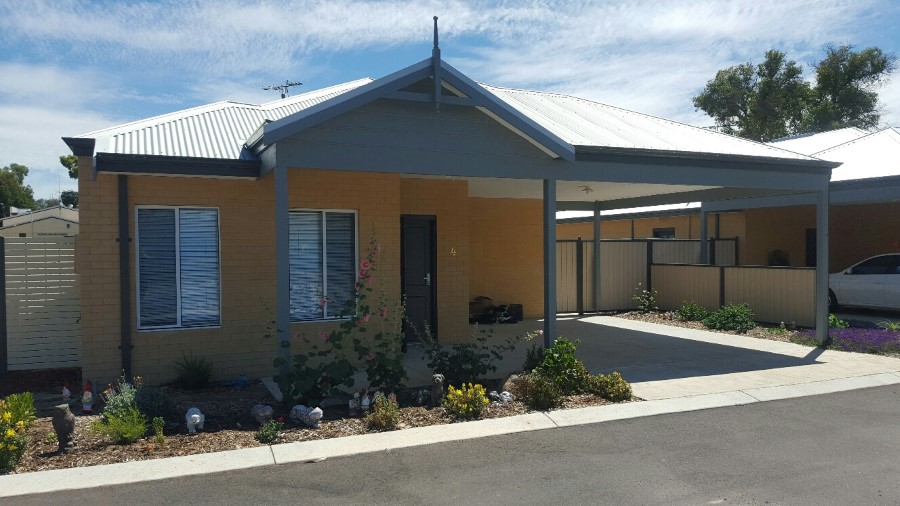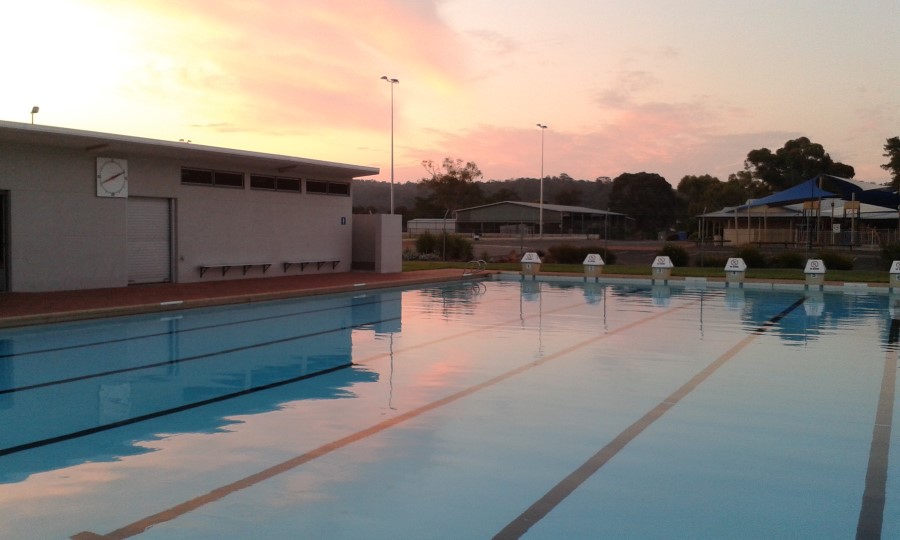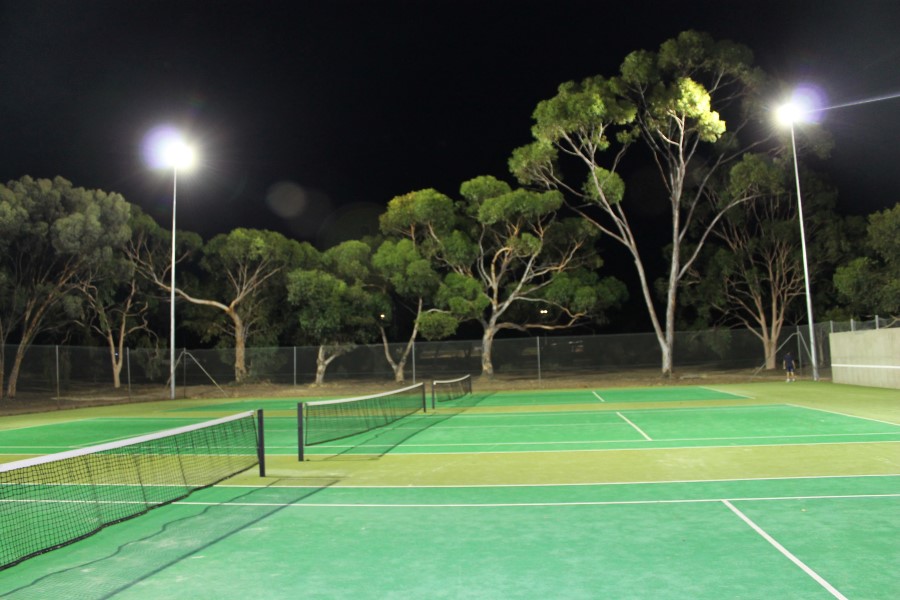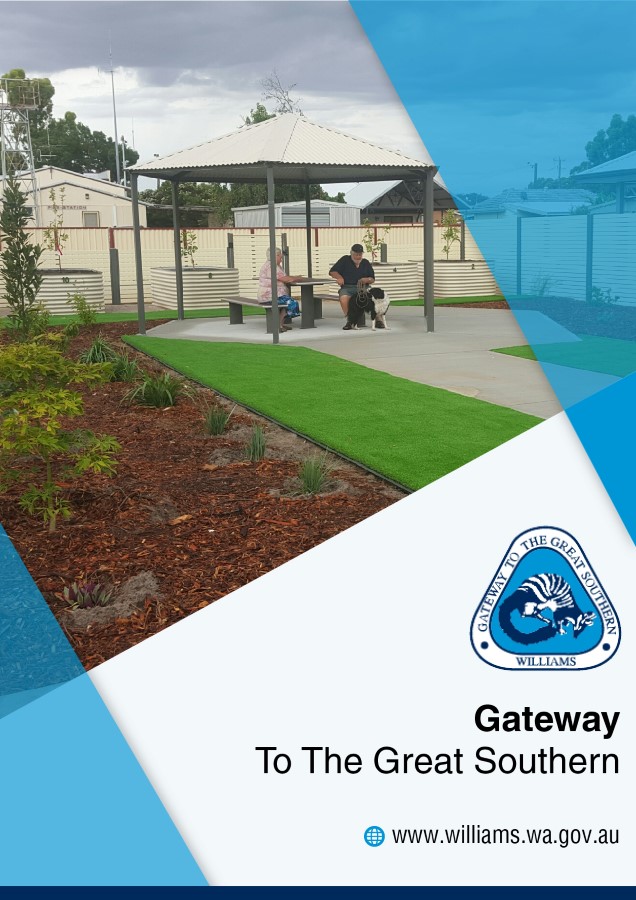Though there are those who support the notion that small local governments do not hold a lot of responsibility, and are considered too small to effectively manage large scale projects, there are plenty of local governments who would quickly prove them wrong. The Shire of Williams, located in regional Western Australia, is certainly one of the brightest examples, as its small local government team has manage to not only secure significant investments for itself, but has also managed a project that has included six of its neighbouring councils. Its level of competence, expertise and efficiency has been proven time and time again.
Geoff McKeown, the Council’s CEO and Heidi Cowcher, the Economic Development Officer, talked to us about the Council’s recent work and how it has not only benefitted the Shire of Williams, but also the regional area encompassing a further six local governments in a unique collaborative partnership. Geoff, who joined the team in December 2015, has had the pleasure of overseeing the final stages of multiple projects undertaken by the Council over the last few years. Heidi, who has been with the Council since 2002, has played a very active role in identifying high priority needs, sourcing and securing funding for the identified projects, and fostering and supporting an economic development alliance with other local Councils.
The 4WDL Well Aged Housing Project – Meeting the needs of an ageing population
One of the largest projects managed by the Shire of Williams has been the 4WDL Well Aged Housing Project. The project identified that housing was a collective need across 7 local governments and this shared need could be developed into a collaborative project that would, at completion, see the construction of up to 50 dedicated independent living units across the 7 Councils and 9 individual communities. A project that would end up being delivered over 8 years and would attract over $18m of WA state government investment through the Royalties for Regions funding program. The allocation and distribution of funding and units was determined based on evidence of need in the respective communities ensuring therefore that those communities with the greatest need had the greatest allocation of funding and units to meet the identified need.
The 4WDL regional group is aptly named as it is a working regional organisation of councils made up of the Shires of Williams, Wagin, West Arthur, Woodanilling (4 W’s), Dumbleyung (D) and Lake Grace (L). The Shire of Kent was part of the project for the delivery of one component of the project but is not a formal member of the collaborative group.

Despite the Shire of Williams being relatively speaking, one of the smaller local governments of the seven in terms of size and administrative staff, it volunteered itself to manage the project on behalf of the regional group. Williams has worked tirelessly on behalf of the seven local governments to secure and then manage the funding that is being used to construct dedicated aged persons accommodation across the region. Indeed, so successful has been the model that it has been implemented in other regional projects across the state for the delivery of aged housing in other regional towns and communities. The success of the project and the model of the delivery of it is a credit to the Shire of Williams and their ability to manage such a large scale project with a comparatively small administrative workforce. The Shire of Williams has been responsible for the overall financial management of the funding and the project reporting and acquittal requirements, whereas the individual partner local governments have been responsible for the management and delivery of the local construction of the units, designed and constructed to meet the needs of the respective communities. This ensures a greater sense of ownership of the project locally, as well as the delivery of units that meet the uniqueness and individualism of each community. The collaborative partnership model of the 4WDL regional group has worked hard together to ensure that the project continued to meet the identified needs and delivery equitable distribution of funding across the region.

The very reason that the project was identified at the outset was to meet the growing needs of an ageing population. The group had identified that the populations in their towns were ageing, and this ageing demographic increasingly wanted to remain in their community of choice, not being forced to leave town due to inadequate or inappropriate housing. They wanted smaller, low care homes, central in the community so that they could continue to live and enjoy all that smaller communities’ offer and not be forced to move away, perhaps to a larger regional centre where they did not know anyone or have any connection to that community. These residents are integral contributors in their close-knit communities and wish to remain involved as long as practically possible. Independent living units are designed with ageing persons in mind – allowing residents to move around safely and catering for times where they may need mobility assistance. They are designed so the resident can live there as long as they are well enough to care independently for themselves, or with minimal assistance from outside carers. Recognising that ultimately if they needed more permanent care, then the transition to a high care facility or similar would be required. ‘Ageing in place’ is the catchcry and is widely supported and advocated for, for this ageing demographic.
“The community has been really positive. We’ve been able to retain members of our community that would otherwise have had to leave […]. Previously, we haven’t had suitable or adequate housing stock within our community to meet that demand so now that we have, we have been able to retain members of our community as we as attract new residents. Often these residents are significant volunteers in the community and contribute to the many and varied community groups. If they were to leave, then these contributions are lost. When you get older you don’t really want to leave the security of the place where you may have spent most of your life. You have your friends, your connections…some have lived in the community for 30, 40 or even 50 years. People are always more content to remain in a place they know rather than make a new life, and a new home, new friends and connections, in their twilight years”, Heidi explains.
Meeting needs of whole community
Not only has the Shire considered and planned for the needs of its ageing population, but they also addressed the infrastructure needs of the wider community. Over the last 10 years, the Shire has attracted considerable funding and invested in improvements in the sport and recreation facilities in town, which has seen upgrades to the Williams Swimming Pool, tennis courts, the provision of a new shared basketball and netball surface, upgrades to the sports pavilion, the construction of a new hockey pitch, upgrades to the reticulation of the main sports oval (used for cricket and football primarily), improvements at the bowling club and support and funding for a number of activities and programs in the community.

Geoff also talked to us about the Williams Community Resource Centre and spoke very highly of the work being undertaken there: “Like many other shires, we have a Community Resource Centre here in Williams. The Coordinator and her team run a lot of community activities for all ages, for those interested in learning business skills including the use of computers, to those interested in arts and culture, to those community groups that may need assistance with governance and the running of a community group. The library also runs from this facility. The Centre is an important part of the fabric of this community. Anyone who sees the building itself is also highly impressed. Even though it was opened more than 10 years ago, it has a contemporary feel and is a vibrant place to be.

The Shire also recently completed the refurbishment of the old St John Ambulance Centre into a Childcare Centre – Willi Wag Tails Childcare Centre. Council recognised that there was not only a growing ageing demographic, but also a significant and growing 0-4 population. With increasing numbers of working parents needing childcare for their children, this need supported the establishment of the service in 2012. The service caters for up to 20 children per day, five days per week. The service employs a number of locals in the centre. So not only has the centre supported the working families to continue to work and contribute to the local economy, it also provides local employment opportunities as an added bonus.
Continually striving for improvement
One of local government’s main areas of responsibility is the maintenance of its comprehensive local road network. Whilst State Government is tasked with the responsibility of the major arterial routes, it is the local roads, and feeder roads, that local government maintain and upgrade as required and needed. Annually, this is a large part of the works program and component of the Shire budget. The Shire of Williams prides itself on its road network and continuously strives to make improvements that will support the network.
As a community, the townsite of Williams is ideally situated, as it is located on the Albany Highway, a strategic link road that boasts around 4,000 vehicle movements per day on a ‘normal’ day, and seasonally up to 10,000 during peak tourist times (school holidays, long weekends). Known as the ‘Gateway to the Great Southern’, Williams, supports the tourist economy with a number of local businesses providing services to the travelling public. The Shire strives to ensure that the townsite is aesthetically pleasing and attractive, making it a great place to stop, relax and revive on your journey.
Overall, it is commendable indeed, that the Shire of Williams has been able to not only cater for and provide for the needs of its own community, but has also played such a pivotal role in supporting the development the wider region through a range of diverse projects both large and small.
AT A GLANCE
WHO: Shire of Williams
WHAT: Local Government
WHERE: 9 Brooking Street, Williams, WA, Australia 6391
WEBSITE: www.williams.wa.gov.au
Sponsored Advertorials
- Vantage West
- Vantage West
- Oborne Concrete






 This information will never be shared to third parties
This information will never be shared to third parties